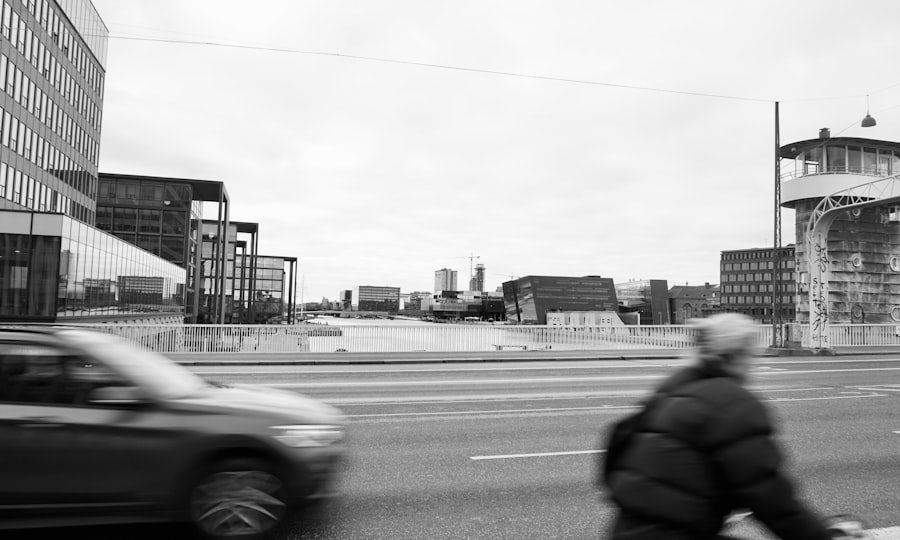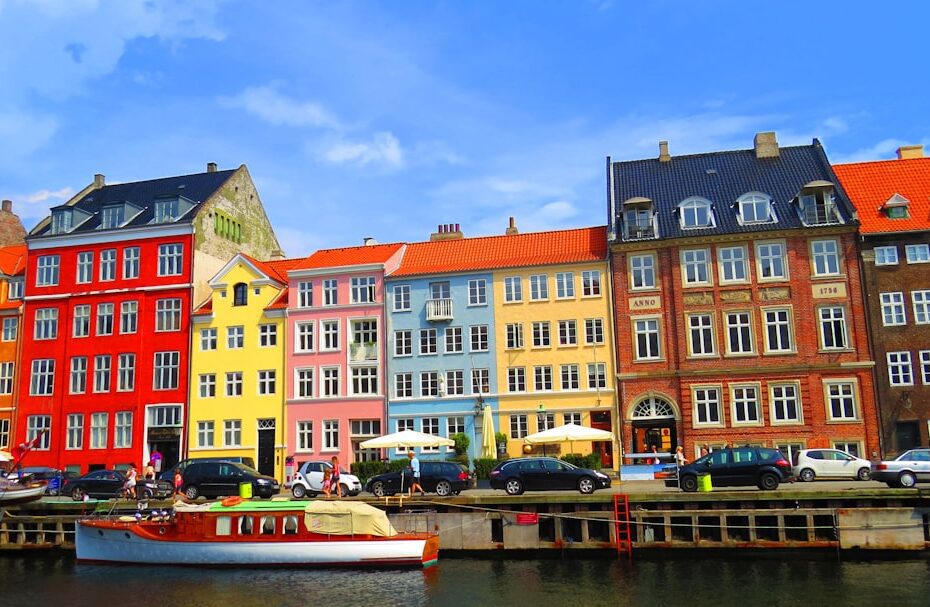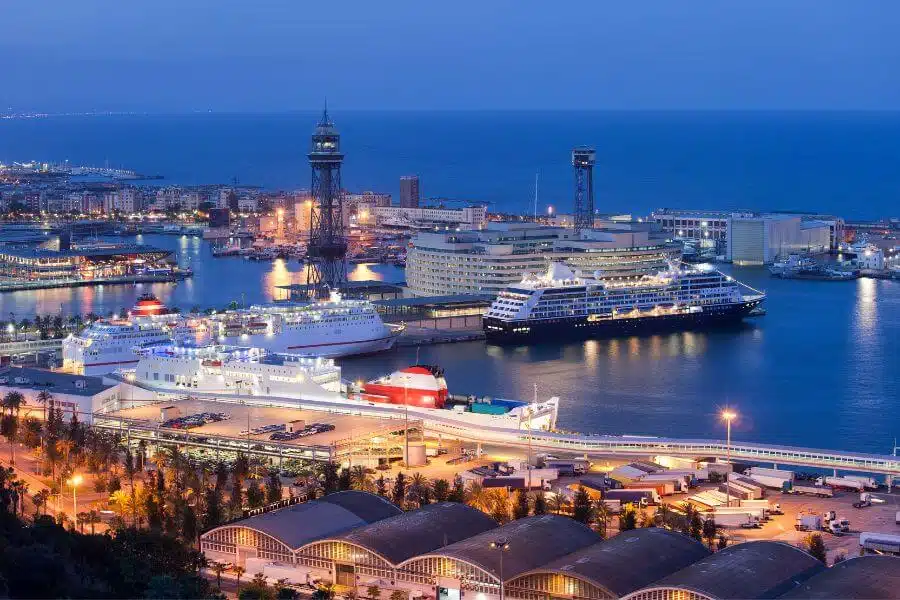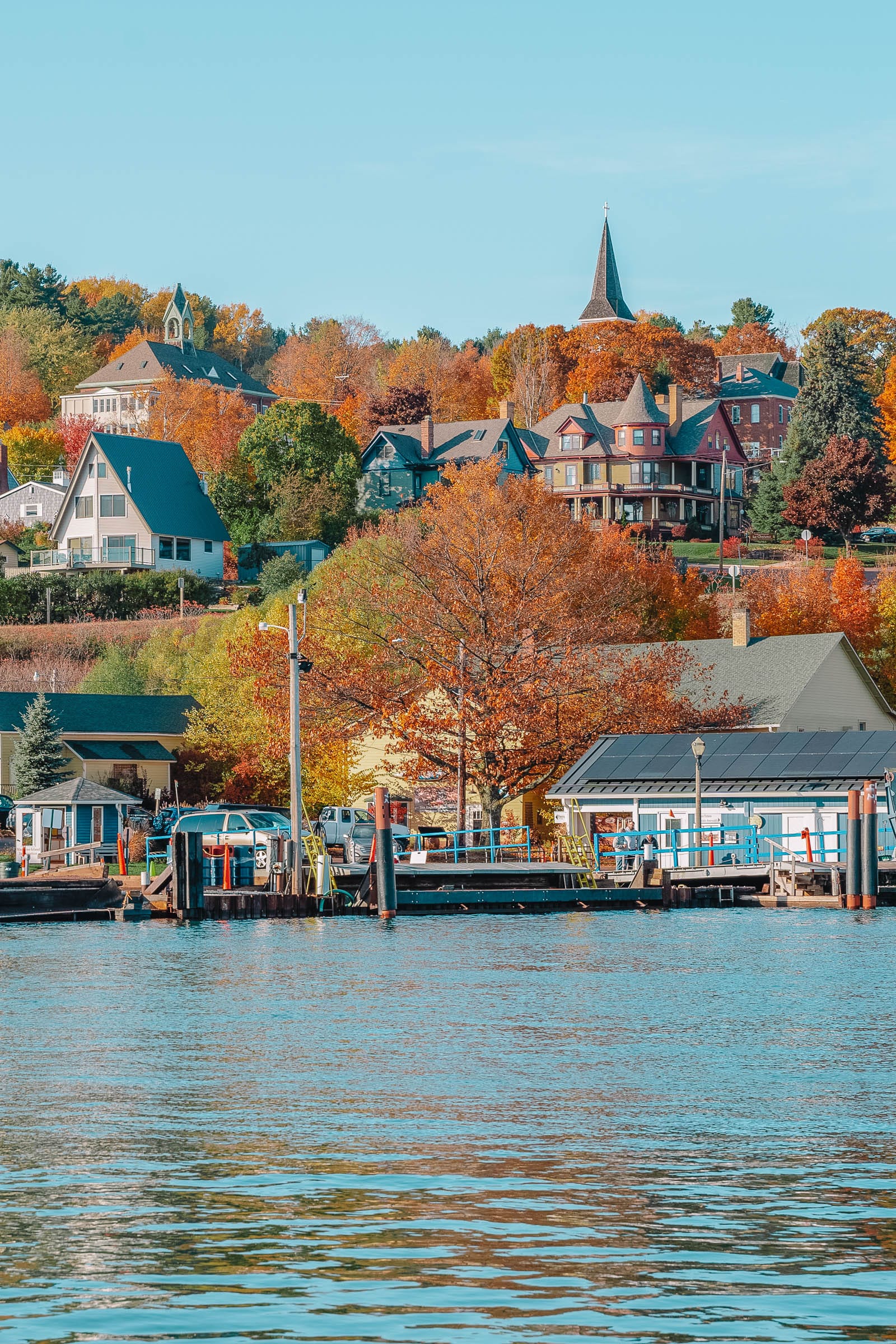Copenhagen, the capital city of Denmark, is a vibrant and charming destination that offers a unique blend of history, culture, and modernity. With its picturesque canals, colorful buildings, and friendly atmosphere, it is no wonder that Copenhagen has become a popular tourist destination. Exploring the city’s attractions is not only a way to appreciate its beauty, but also an opportunity to immerse oneself in Danish history and culture. From the charming Nyhavn to the majestic Tivoli Gardens, there is something for everyone in Copenhagen.
Key Takeaways
- Nyhavn is a charming and picturesque area that is a must-visit attraction in Copenhagen.
- Tivoli Gardens is a majestic and fun-filled place that is perfect for relaxation and entertainment.
- Amalienborg Palace offers a glimpse into the Danish royalty and their history.
- Christiania is a fascinating experience that takes you through the historic streets of Copenhagen.
- The Little Mermaid Statue is a symbol of Copenhagen’s rich culture and heritage.
Discover the Charm of Nyhavn: A Must-Visit Attraction in Copenhagen
Nyhavn is one of the most iconic and picturesque areas in Copenhagen. This waterfront district is known for its colorful buildings and charming canal, which is lined with restaurants, cafes, and bars. The vibrant facades of the buildings create a lively and cheerful atmosphere that is perfect for strolling along the canal or enjoying a meal or drink at one of the many outdoor terraces.
The history of Nyhavn dates back to the 17th century when it was a busy commercial port. Today, it has transformed into a popular tourist destination while still retaining its historic charm. The area was once home to famous Danish author Hans Christian Andersen, and visitors can even visit his former residence, which has been turned into a museum.
In addition to enjoying the beautiful scenery, there are plenty of activities to do in Nyhavn. Visitors can take a boat tour along the canal to see the city from a different perspective or rent a bike to explore the surrounding neighborhoods. There are also numerous dining options available, ranging from traditional Danish cuisine to international flavors.
Explore the Majestic Tivoli Gardens: A Perfect Place for Fun and Relaxation
Tivoli Gardens is an amusement park located in the heart of Copenhagen that offers a perfect blend of fun and relaxation. With its beautiful gardens, thrilling rides, and live entertainment, it is a must-visit attraction for both locals and tourists alike.
The history of Tivoli Gardens dates back to 1843, making it one of the oldest amusement parks in the world. It was inspired by the romantic gardens of Europe and was designed to provide a place for people to escape the hustle and bustle of city life. Today, it continues to be a popular destination for families, couples, and friends looking for a day of fun and relaxation.
Visitors to Tivoli Gardens can enjoy a wide range of attractions and entertainment options. From roller coasters and carousels to live performances and fireworks displays, there is something for everyone. The park also features beautiful gardens, lakes, and fountains, providing a peaceful and serene atmosphere amidst the excitement.
When visiting Tivoli Gardens, it is recommended to plan ahead and check the park’s schedule for special events or performances. It is also advisable to arrive early to avoid long lines for popular rides. Additionally, there are several dining options available within the park, ranging from casual cafes to fine dining restaurants.
Get a Glimpse of Danish Royalty at Amalienborg Palace
| Metrics | Values |
|---|---|
| Location | Copenhagen, Denmark |
| Number of Palaces | 4 |
| Construction Year | 1750 |
| Architect | Nicolai Eigtved |
| Current Use | Residence of the Danish Royal Family |
| Visitor Information | Open to the public for guided tours |
Amalienborg Palace is the official residence of the Danish royal family and is a must-visit attraction for anyone interested in Danish history and culture. Located in the heart of Copenhagen, this elegant palace complex consists of four identical rococo palaces that surround a central courtyard.
The significance of Amalienborg Palace goes beyond its architectural beauty. It serves as a symbol of Danish monarchy and is an important part of the country’s history. Visitors can explore the palace’s museum, which showcases royal artifacts and provides insights into the lives of Danish kings and queens.
One of the highlights of visiting Amalienborg Palace is witnessing the changing of the guard ceremony. This daily tradition takes place at noon in the palace courtyard and is a spectacle not to be missed. The ceremony involves the royal guard marching from their barracks to the palace, accompanied by a military band.
When visiting Amalienborg Palace, it is recommended to check the schedule for the changing of the guard ceremony and arrive early to secure a good viewing spot. Afterward, visitors can explore the surrounding area, which includes the beautiful Frederik’s Church and the picturesque waterfront promenade.
Stroll Along the Historic Streets of Christiania: A Fascinating Experience
Christiania is a unique neighborhood in Copenhagen that offers a fascinating glimpse into an alternative way of life. Established in 1971, this self-proclaimed autonomous community is known for its liberal and bohemian atmosphere.
The history of Christiania dates back to when a group of squatters took over an abandoned military barracks and declared it a free town. Today, it is home to a diverse community of artists, musicians, and activists who have created a vibrant and creative environment.
One of the most striking features of Christiania is its unique architecture and street art. The buildings in the neighborhood are colorful and eclectic, with each one reflecting the individuality and creativity of its residents. Visitors can take a leisurely stroll through the streets, admiring the artwork and soaking in the bohemian atmosphere.
In addition to its artistic charm, Christiania also offers a range of cultural activities and events. There are several art galleries, music venues, and theaters where visitors can experience the creativity and talent of local artists. The neighborhood also has its own cafes and restaurants that serve organic and vegetarian cuisine.
When exploring Christiania, it is important to respect the community’s rules and guidelines. Photography is generally not allowed in certain areas, and visitors are expected to be mindful of their behavior and surroundings. It is also recommended to visit during daylight hours when there are more activities and events taking place.
Visit the Little Mermaid Statue: A Symbol of Copenhagen’s Rich Culture

The Little Mermaid statue is one of the most iconic symbols of Copenhagen and is a must-visit attraction for anyone interested in Danish culture and history. Located on a rock by the waterside, the statue depicts a mermaid looking out to sea and was inspired by the famous fairy tale written by Hans Christian Andersen.
The history of the Little Mermaid statue dates back to 1913 when it was commissioned by Danish brewer Carl Jacobsen. The statue was created by sculptor Edvard Eriksen and has since become a beloved symbol of Copenhagen. Despite its small size, it attracts millions of visitors each year who come to admire its beauty and significance.
The surrounding area of the Little Mermaid statue is also worth exploring. Visitors can take a leisurely stroll along the waterfront promenade, which offers beautiful views of the harbor and the city skyline. There are also several other attractions nearby, including the Kastellet fortress and the Gefion Fountain.
When visiting the Little Mermaid statue, it is recommended to arrive early in the morning or late in the evening to avoid crowds. It is also advisable to bring a camera to capture the beauty of the statue and its surroundings. However, it is important to be respectful and not climb on or touch the statue.
Indulge in Delicious Danish Cuisine: A Foodie’s Paradise
Copenhagen is a foodie’s paradise, offering a wide range of delicious Danish dishes that are sure to satisfy any palate. From traditional smørrebrød (open-faced sandwiches) to mouthwatering pastries, there is something for everyone to enjoy.
Traditional Danish cuisine is characterized by its simplicity and focus on fresh, local ingredients. Smørrebrød is a classic Danish dish that consists of a slice of rye bread topped with various toppings such as pickled herring, smoked salmon, or roast beef. It is typically enjoyed for lunch and is often accompanied by a cold beer or aquavit, a traditional Danish spirit.
Another popular Danish dish is frikadeller, which are meatballs made from a mixture of ground pork and beef. They are typically served with boiled potatoes, gravy, and pickled red cabbage. For dessert, visitors can indulge in Danish pastries such as wienerbrød, which are flaky and buttery pastries filled with sweet fillings like custard or fruit.
When dining in Copenhagen, there are several restaurants and cafes that offer traditional Danish cuisine. Some popular options include Restaurant Schønnemann, which is known for its smørrebrød, and Noma, which has been named the best restaurant in the world multiple times. It is also recommended to try some of the local street food, such as hot dogs or pølsevogn, which can be found throughout the city.
When ordering Danish cuisine, it is important to be aware of the portion sizes. Danish meals are typically smaller compared to other cuisines, so it is common to order multiple dishes to share. It is also customary to tip around 10% of the bill if the service was satisfactory.
Take a Bike Tour: A Unique Way to Explore the City
Exploring Copenhagen by bike is not only a fun and unique way to see the city but also a practical and efficient mode of transportation. With its extensive network of bike lanes and flat terrain, Copenhagen is often referred to as one of the most bike-friendly cities in the world.
There are several benefits to exploring Copenhagen by bike. Firstly, it allows visitors to cover more ground and see more attractions in a shorter amount of time compared to walking or using public transportation. Secondly, it provides a more immersive experience as cyclists can easily stop and explore different neighborhoods or attractions along the way.
There are several bike tour options available in Copenhagen, ranging from guided tours to self-guided routes. Guided tours are a great option for those who want to learn more about the city’s history and culture from a knowledgeable guide. Self-guided routes, on the other hand, offer more flexibility and allow visitors to explore at their own pace.
When renting bikes in Copenhagen, it is important to choose a reputable rental shop and ensure that the bikes are in good condition. It is also recommended to wear a helmet and follow traffic rules and regulations to ensure safety. Additionally, it is advisable to bring a map or use a navigation app to help navigate the city’s bike lanes.
Visit the National Museum of Denmark: A Treasure Trove of Danish History
The National Museum of Denmark is a treasure trove of Danish history and culture and is a must-visit attraction for anyone interested in learning about the country’s past. Located in the heart of Copenhagen, this museum houses an extensive collection of artifacts and exhibits that span thousands of years.
The museum’s exhibits cover a wide range of topics, including prehistoric times, Viking history, medieval art, and modern Danish culture. Visitors can explore the various galleries and learn about Denmark’s rich heritage through interactive displays, archaeological finds, and historical artifacts.
One of the highlights of the National Museum of Denmark is the Viking exhibition, which showcases the life and culture of the Vikings through a collection of weapons, jewelry, and everyday objects. The museum also has a dedicated children’s section where young visitors can learn about Danish history through hands-on activities and games.
When visiting the National Museum of Denmark, it is recommended to allocate enough time to explore all the exhibits. The museum is quite large, and it can take several hours to fully appreciate its vast collection. It is also advisable to check the museum’s website for any special exhibitions or events that may be taking place during your visit.
Enjoy the Scenic Beauty of Frederiksberg Gardens: A Perfect Place for a Picnic
Frederiksberg Gardens is a beautiful park located in the heart of Copenhagen that offers a peaceful and scenic retreat from the bustling city. With its lush greenery, picturesque lakes, and charming gardens, it is a perfect place for a leisurely stroll or a relaxing picnic.
The history of Frederiksberg Gardens dates back to the 18th century when it was created as a royal garden for Frederiksberg Palace. Today, it is open to the public and is a popular destination for both locals and tourists looking to escape the city’s hustle and bustle.
The park features several attractions and activities for visitors to enjoy. There are several walking paths that wind through the gardens, offering beautiful views of the lakes and the palace. There is also a Chinese Pavilion, which was built in the 18th century and offers a unique architectural style.
In addition to its natural beauty, Frederiksberg Gardens also offers several dining options. Visitors can bring their own picnic or enjoy a meal at one of the park’s cafes or restaurants. There are also several playgrounds and sports facilities available for those looking for more active pursuits.
Experience the Thrill of Climbing the Church of Our Saviour: A Must-Do Activity in Copenhagen
The Church of Our Saviour is one of the most iconic landmarks in Copenhagen and offers visitors a unique and thrilling experience. Located in the Christianshavn neighborhood, this baroque church is known for its distinctive helix spire, which can be climbed to enjoy panoramic views of the city.
The architecture of the Church of Our Saviour is truly remarkable. The spire, which was added in the 18th century, twists in a helix shape and is adorned with gilded statues. Climbing to the top of the spire involves ascending a narrow spiral staircase that becomes increasingly steep as you reach the summit.
The climb to the top of the Church of Our Saviour is not for the faint of heart, but the views from the top are well worth the effort. From the observation deck, visitors can enjoy panoramic views of Copenhagen’s skyline, including landmarks such as the Little Mermaid statue and Amalienborg Palace.
When climbing the Church of Our Saviour, it is important to wear comfortable shoes and be prepared for a challenging ascent. The staircase can be narrow and steep, so it is advisable to take your time and be mindful of other climbers. It is also recommended to check the opening hours of the church as it may be closed for services or maintenance.
Copenhagen is a city that offers a wealth of attractions and experiences for visitors to explore. From the charming Nyhavn to the majestic Tivoli Gardens, there is something for everyone in this vibrant and cultural city. Whether you are interested in history, art, food, or outdoor activities, Copenhagen has it all. So pack your bags and get ready to immerse yourself in Danish culture and history in this beautiful Scandinavian city.
FAQs
What is Copenhagen?
Copenhagen is the capital city of Denmark, located in Northern Europe.
What are some popular tourist attractions in Copenhagen?
Some popular tourist attractions in Copenhagen include Tivoli Gardens, The Little Mermaid statue, Nyhavn harbor, and the Amalienborg Palace.
What are some outdoor activities to do in Copenhagen?
Visitors can enjoy biking along the city’s many bike paths, taking a boat tour of the canals, or visiting one of the city’s many parks and gardens.
What are some indoor activities to do in Copenhagen?
Indoor activities in Copenhagen include visiting museums such as the National Museum of Denmark or the Danish Design Museum, exploring the city’s many art galleries, or shopping in the city’s many boutiques and department stores.
What is the best time of year to visit Copenhagen?
The best time to visit Copenhagen is during the summer months of June, July, and August when the weather is mild and there are many outdoor events and festivals.
What is the currency used in Copenhagen?
The currency used in Copenhagen is the Danish krone (DKK).
What is the primary language spoken in Copenhagen?
The primary language spoken in Copenhagen is Danish, but many people also speak English.
What is the transportation system like in Copenhagen?
Copenhagen has an extensive public transportation system including buses, trains, and a metro system. Biking is also a popular mode of transportation in the city.
- Unveiling the Truth: Weightlifting for Women and Strength Building - November 4, 2024
- The Ultimate Guide to Weightlifting for Beginners - November 4, 2024
- Boost Your Mood and Ease Anxiety with Cardio Exercises - November 4, 2024




